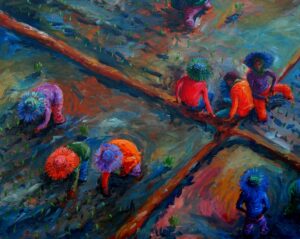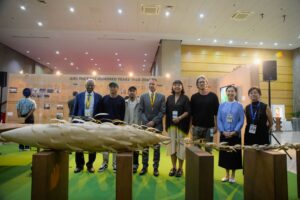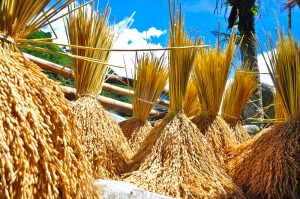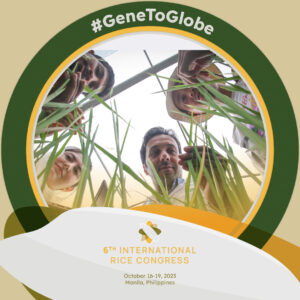
Mention the island country Singapore and rice growing may not be the first activity that springs to mind.
However, like most countries in Asia, rice is an indispensable food grain in Singapore, as it is not only a significant ingredient in local cuisines but it is also an integral part of the small nation’s culture and traditions.
In an effort to raise awareness about rice—how this cereal starts as seeds planted in plots to a steaming bowl of rice served in Singaporean dining—the Science Centre Singapore (SCS) and the International Rice Research Institute (IRRI), with support from the Lee Foundation, launched a rice exhibit and education program on World Food Day 2010 on 16 October.
Bearing the theme Rice and the Cycle of Life, the exhibit introduced Singaporeans to the rice plant’s anatomy, different rice varieties, tools and implements used in rice farming, and consumer products with rice as an ingredient. Visitors also got a chance to dehusk rice grains and create a rangoli, a traditional Indian floor decoration made from brightly colored rice flour. Moreover, SCS handed out illustrated booklets about rice and a 5-gram packet of IR64 seeds that included instructions on how to grow rice so people could try planting them at home with the family.
To supplement this informal learning, master teachers of geography from Singapore high schools also attended a training workshop conducted by SCS. Because of this, rice education has been officially incorporated into the school curriculum.
These activities aimed to help Singaporean youngsters understand the relationship between their food and the environment—particularly climate change—and to inspire more young people to become plant scientists. Even though Singapore is a small country that does not grow rice commercially, its next generation of agriculture advocates has much to contribute to the future of rice research.
_________________________________________
Ms. Shyam is a development officer with IRRI Fund Singapore.










